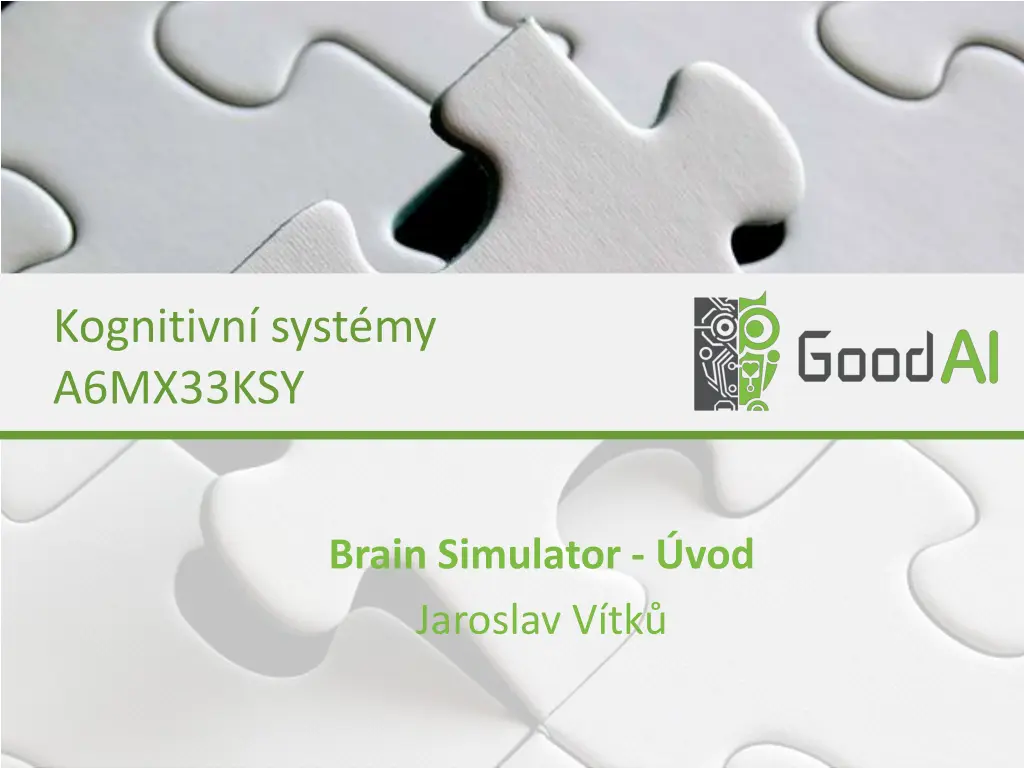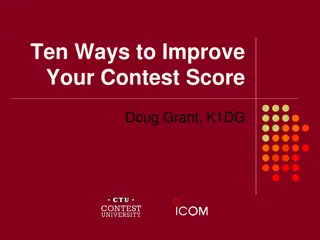
Understanding Brain Simulator Learning Techniques
Explore the Brain Simulator and its applications in modeling cognitive systems. Dive into supervised, unsupervised, and reinforcement learning methods, as well as scripting possibilities in C# and Python. Discover how to write custom code, types of learning, data examples, and more.
Download Presentation

Please find below an Image/Link to download the presentation.
The content on the website is provided AS IS for your information and personal use only. It may not be sold, licensed, or shared on other websites without obtaining consent from the author. If you encounter any issues during the download, it is possible that the publisher has removed the file from their server.
You are allowed to download the files provided on this website for personal or commercial use, subject to the condition that they are used lawfully. All files are the property of their respective owners.
The content on the website is provided AS IS for your information and personal use only. It may not be sold, licensed, or shared on other websites without obtaining consent from the author.
E N D
Presentation Transcript
Kognitivn systmy A6MX33KSY Brain Simulator - vod Jaroslav V tk
Cle cvien Pou it Brain Simulatoru pro modelov n v KSI - CV1: z kladn principy, pou it st vaj c ch uzl - CV2: pokro ilej pou it , skriptov n v C# (python) Typy u en (supervised/unsupervised/reinforcement) as na dotazy ohledn semestr ln ch prac Jednoduch zad n
Nov verze BrainSimulatoru Brain Simulator ke sta en (dokumentace) http://www.goodai.com/brain-simulator F rum pro dotazy http://forum.goodai.com/index.php
C# Node Scripting How to write own code in the BrainSimulator? Possibility 1 - Download BrainSimulator sources - Open project in the Visual Studio - Implement own Node/World Possibility 2 - Use a special nodes for scripting - C# and Python nodes - Demo now
Types of Learning Supervised Unsupervised Reinforcement
Data examples Data
Supervised learning examples label label1 label3 labeled examples label4 label5 Supervised learning: given labeled examples
Supervised learning label label1 model/ predictor label3 label4 label5 Supervised learning: given labeled examples
Supervised learning model/ predictor predicted label Supervised learning: learn to predict new example
Supervised learning: classification label apple Classification: a finite set of labels apple banana banana Supervised learning: given labeled examples
Unsupervised learning Unsupervised learning: given data, i.e. examples, but no labels
Reinforcement learning left, right, straight, left, left, left, straight GOOD BAD left, straight, straight, left, right, straight, straight left, right, straight, left, left, left, straight 18.5 -3 left, straight, straight, left, right, straight, straight Given a sequence of examples/states and a reward after completing that sequence, learn to predict the action to take in for an individual example/state
Reinforcement learning example Backgammon WIN! LOSE! Given sequences of moves and whether or not the player won at the end, learn to make good moves
Brain Simulator Learning Supervised - FF network, MNIST classifier - LSTM network, prediction of sequences Unsupervised - MNIST + RBM (unsupervised) Reinforcement - Q-Learning Breakout game - Discrete Q-Learning
Brain Simulator Useful stuff Visual Attention - Focuser example
Reaching AGI with Brain Simulator D kuji za pozornost Brain Simulator ke sta en + dokumentace http://www.goodai.com/brain-simulator F rum pro dotazy http://forum.goodai.com/index.php Uk zkov projekty ke sta en https://github.com/GoodAI/BrainSimulatorSampleProject s Typy u en , slidy zdroj: http://goo.gl/FzmBGH jaroslav.vitku@keenswh.com
A6MX33KSY semestrln prce T mata: - Predikce pohybu jednoho objektu - Simulace pozornosti p ipr chodubludi t m - Hra Logik - Hra Pi kvorky - Hra Blockout
Brain Simulator modules Implemented modules - FFNs, RNNs, CNNs, LSTM, RBMs - Self-organizing networks (SOM, GNG) - Vector symbolic architectures (HRR, BSC) - Hierarchical temporal memory (spatial & temporal poolers) - Spiking networks & STDP - Computer vision (filters, segmentation, optical flow ) - SLAM, PID - Q-Learning Imported modules - Caffe, BLAS, BEPU Physics, Space Engineers



